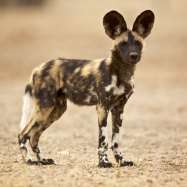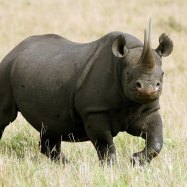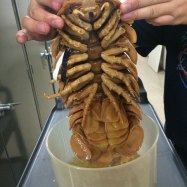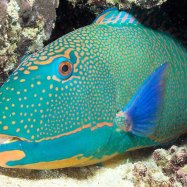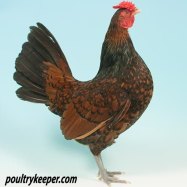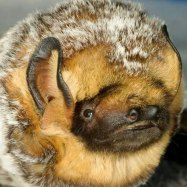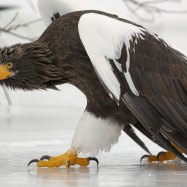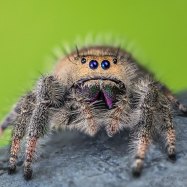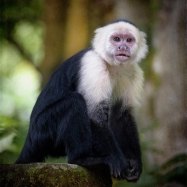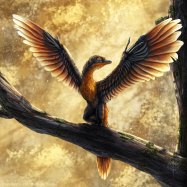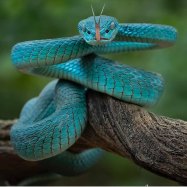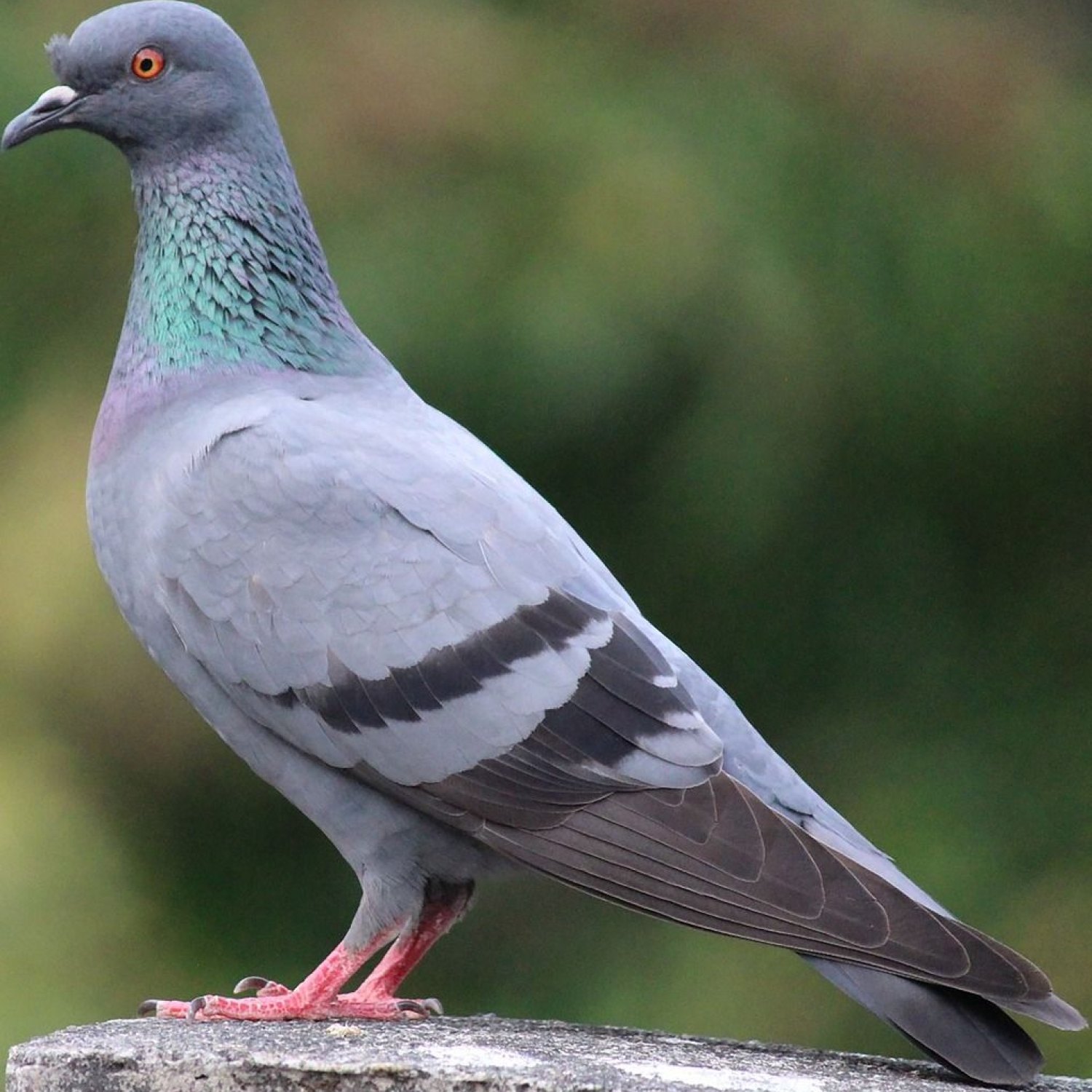
Pigeon
30-35 cm
The pigeon, a medium-sized bird with a compact body and short legs, belongs to the Columbidae family. Found globally, they measure 30-35 cm in length and are known for their often gentle and graceful movements. These birds are considered symbols of peace and are commonly seen in urban environments. #Pigeon #Birds #Nature
Animal Details Summary:
Common Name: Pigeon
Kingdom: Animalia
Habitat: Urban areas, farmland, forests
The Pigeon: A Fascinating Urban Bird
When we think of urban birds, pigeons are often the first to come to mind. These ubiquitous birds are a common sight in cities around the world, with their distinctive cooing and rapid flapping of wings. While they may be dismissed as pesky or dirty by some, pigeons are actually a fascinating and important member of the animal kingdom. In this article, we will delve into the world of pigeons and discover what make them unique and essential creatures Pigeon.The Basics
Scientifically known as Columba livia, pigeons belong to the animal kingdom, phylum Chordata, and class Aves, making them closely related to other birds such as doves and sparrows. They are a part of the order Columbiformes and the family Columbidae, which also includes other species like mourning doves and rock pigeons. Pigeons are found all over the world, with a global distribution and no specific country of origin. They are believed to have been domesticated from wild rock pigeons, and their various colors, such as white, gray, brown, and black, are a result of selective breeding.Habitat and Adaptations
Pigeons have adapted well to urban environments and can be found in cities, suburbs, and even rural areas. They have a versatile diet and can thrive in a variety of habitats, including urban areas, farmlands, and forests. This is because they are omnivorous, which means they have a diverse diet and can eat both plants and animals.Their compact bodies and short legs make them efficient flyers, allowing them to maneuver through cities and buildings with ease. Pigeons also have strong homing abilities, which means they can navigate and return to their roosting sites even in unfamiliar environments Philippine Cobra. This homing instinct has been harnessed by humans for centuries, using pigeons as messenger birds to relay important messages over long distances.
Their Role in the Ecosystem
Pigeons may not be the most glamorous or graceful birds, but they play a vital role in the ecosystem. As omnivores, they help maintain the balance in the food chain by eating a variety of plants and animals. Pigeons also have specific feeding habits that can help control pests, such as snails and insects, in urban areas. Additionally, their droppings are a rich source of nutrients for soil and plants, contributing to the overall health of the environment.In addition to their ecological role, pigeons also serve as an important source of food for predatory birds and mammals. Their presence in urban environments provides sustenance for other animals, ultimately helping to maintain a healthy and diverse ecosystem.
Their Social Behavior
Pigeons are highly social creatures and often congregate in large flocks. These flocks are not just for survival but also serve as a means of socialization and communication for pigeons. They use vocalizations and body language to communicate with each other, and they also have a complex social hierarchy within their flocks.Interestingly, pigeons also have the ability to recognize and remember individual faces, both of other pigeons and humans. This cognitive ability is crucial for their survival in urban environments, where they need to navigate and identify their surroundings quickly.
Conservation Status
As a globally distributed species, the overall population of pigeons is relatively stable. However, in some regions, like North America, the population of pigeons has seen a decline due to habitat loss and the use of pesticides. In response to this, organizations such as the National Audubon Society have promoted the nesting of pigeons in urban areas to help boost their populations. In some cities, pigeons are also valued as important members of the community, with dedicated feeding programs and protected roosting sites.Innovation and Research
While often seen as commonplace, pigeons have captured the interest and curiosity of scientists and researchers. One of the most well-known studies involving pigeons is the famous "Puzzle Box" experiment by psychologist B.F. Skinner, where pigeons were trained to perform specific tasks in exchange for food rewards. This study paved the way for modern behavioral and cognitive research involving pigeons and other animals.Today, pigeons are still being studied and used in various research projects. In fact, they have been trained to detect cancer cells in mammograms and identify signs of heart disease in patients. They have also been used to track air pollution levels in cities and even to assist in search and rescue missions.
Human Connection
Pigeons have been a part of human history for centuries, with a long and interesting relationship with humans. As mentioned earlier, they were used as messenger birds in ancient times, and their droppings were even used as a source of fertilizer. In some cultures, pigeons are considered symbols of peace, love, and fidelity.In modern times, pigeons are often seen as a nuisance in urban areas, with their droppings and presence in public spaces. However, there is still a deep fascination with these birds, and they continue to be a part of our lives in different ways. Cities around the world hold annual pigeon racing competitions, and some countries even have special "pigeon parks" dedicated to these birds.
In Conclusion
While often overlooked and dismissed as pests, pigeons are truly fascinating creatures with an important role in the ecosystem and a deep connection to humans. From their adaptability and intelligence to their social nature and unique abilities, pigeons are a testament to the wonders of nature. Next time you see a flock of pigeons in the city, take a few moments to observe and appreciate these incredible birds.

Pigeon
Animal Details Pigeon - Scientific Name: Columba livia
- Category: Animals P
- Scientific Name: Columba livia
- Common Name: Pigeon
- Kingdom: Animalia
- Phylum: Chordata
- Class: Aves
- Order: Columbiformes
- Family: Columbidae
- Habitat: Urban areas, farmland, forests
- Feeding Method: Omnivorous
- Geographical Distribution: Worldwide
- Country of Origin: Unknown (domesticated from wild rock pigeons)
- Location: Global
- Animal Coloration: Various colors including white, gray, brown, and black
- Body Shape: Medium-sized bird with a compact body and short legs
- Length: 30-35 cm
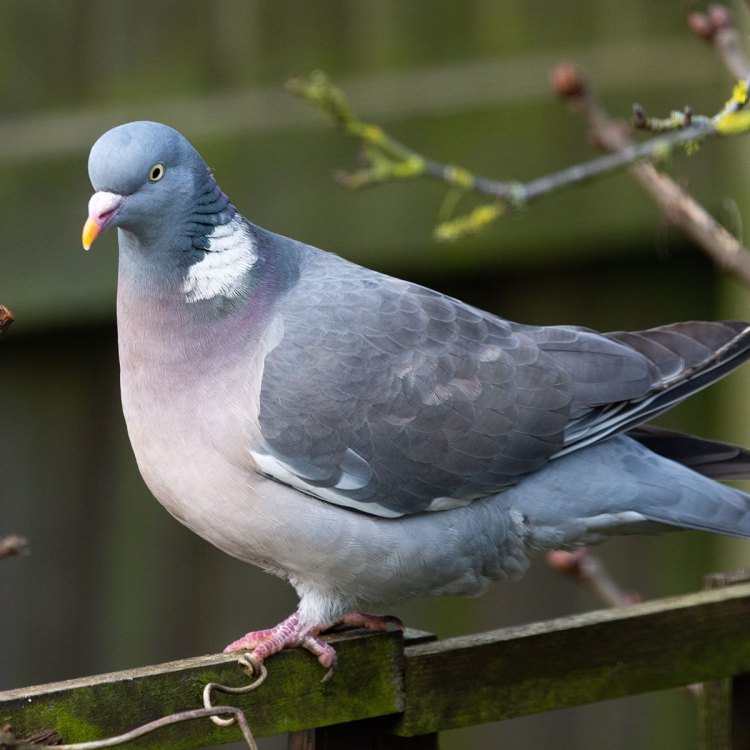
Pigeon
- Adult Size: Medium
- Average Lifespan: 3-5 years (wild), up to 15 years (in captivity)
- Reproduction: Sexual
- Reproductive Behavior: Monogamous
- Sound or Call: Cooing sound
- Migration Pattern: Non-migratory
- Social Groups: Flocks
- Behavior: Social and gregarious
- Threats: Predation, hunting, habitat loss
- Conservation Status: Least Concern
- Impact on Ecosystem: Seed dispersal
- Human Use: Domesticated for food, sport, and as pets
- Distinctive Features: Compact body, short legs, gentle and calm demeanor
- Interesting Facts: Pigeons are highly adaptable and can thrive in urban environments. They have excellent homing abilities and were used as messengers in the past. Pigeons are known to mate for life and both parents take turns incubating the eggs. They have been domesticated for thousands of years and have been bred into various colors and patterns.
- Predator: Birds of prey such as hawks and falcons
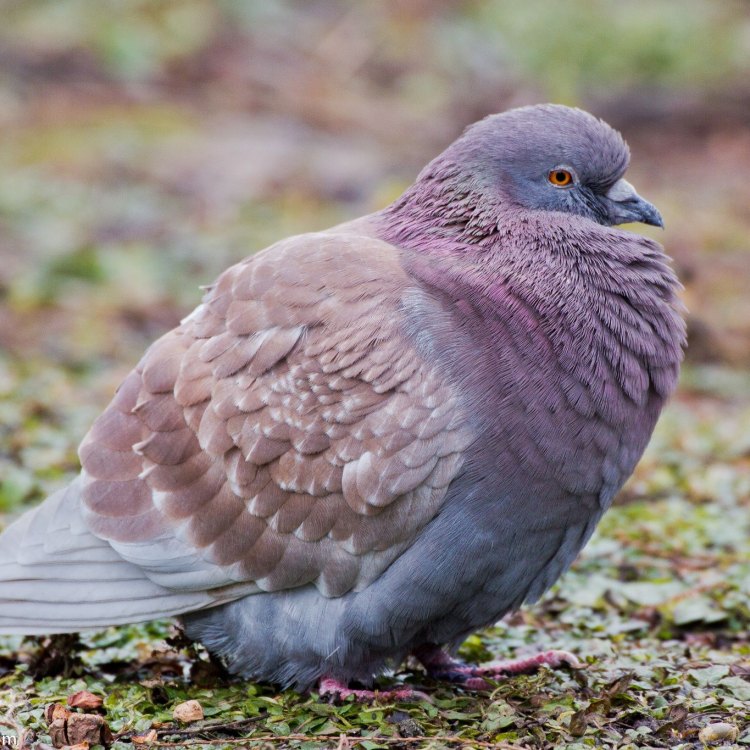
Columba livia
The Fascinating World of Pigeons: More Than Just a City Bird
When we think of pigeons, we often picture them as urban birds, fluttering around city squares and perching on statues. However, these winged creatures have a rich and diverse history, with unique characteristics and behaviors that may surprise many. From their distinct cooing sound to their impressive homing abilities, pigeons have captivated humans for centuries. In this article, we will dive into the world of pigeons, exploring their physical features, behaviors, threats, and impact on the ecosystem PeaceOfAnimals.Com.Let's start with the basics. Adult pigeons are medium-sized birds, typically measuring about 30 centimeters in length and with a wingspan of 50-60 centimeters. They have a compact body, short legs, and a small head with a distinctive beak that is used for foraging. Despite their small stature, pigeons can live up to 3-5 years in the wild and up to 15 years in captivity.
One of the most interesting facts about pigeons is their reproductive behavior. These birds are sexually reproductive, meaning they require both male and female individuals to reproduce. Pigeons are monogamous, which means they mate for life and only have one partner. Furthermore, both parents take turns incubating the eggs, showing a strong sense of commitment and partnership.
Pigeons are known for their distinctive cooing sound, often associated with love and romance Pygmy Marmoset. However, this sound is also used for communication within flocks. Speaking of flocks, pigeons are social and gregarious birds, preferring to live in groups called flocks. These flocks can range in size from a small group of a few birds to a large gathering of thousands. The social nature of pigeons is evident in their behavior, as they often interact with each other by grooming and preening.
One of the most striking features of pigeons is their adaptability. While they are commonly seen in cities, pigeons can thrive in various environments, including forests, grasslands, and even deserts. They have a diverse diet, feeding on seeds, grains, fruits, and even insects. This adaptability extends to their homing abilities, making them an essential tool for humans in the past.
Pigeons have been domesticated for thousands of years, with evidence of their domestication dating back to ancient Mesopotamia. Throughout history, pigeons have been used for various purposes, including as messengers, food, and pets. For example, in ancient civilizations, pigeons were used as messengers to deliver important messages across long distances. This was possible because of their excellent homing abilities, which allow them to navigate back to their home from unfamiliar locations. Pigeons were also domesticated for food, as they were an inexpensive and easily accessible source of protein. Today, pigeons are also commonly kept as pets, with their gentle and calm demeanor making them a favorite among pet owners.
However, despite their adaptability and resilience, pigeons face various threats in the wild. One of the main threats to pigeons is predation by birds of prey such as hawks and falcons. These predators view pigeons as a tasty meal, posing a constant danger to their survival. Another significant threat to pigeons is hunting, particularly in areas where they are considered a pest. Pigeons are also at risk due to habitat loss, as more and more natural habitats are destroyed for development purposes.
So, how do pigeons contribute to their ecosystems? The impact of pigeons on the environment may not be apparent at first glance, but it is significant. Pigeons play a crucial role in seed dispersal, as they consume seeds and fruits from various plants and then disperse them through their droppings. These droppings also contribute to nutrient cycling in the ecosystem, helping to fertilize the soil. Additionally, pigeons are often found in urban areas, where they consume large quantities of discarded food, significantly reducing waste and contributing to the local food web.
When it comes to conservation status, pigeons are classified as "Least Concern" on the IUCN Red List. This means that their population is stable, and they are not at significant risk of extinction. However, this does not mean that we should ignore the threats they face and take them for granted. As with all species, it is essential to maintain a balance in the ecosystem, and pigeons play a crucial role in that balance.
In conclusion, pigeons are much more than just city birds. These adaptable and social creatures have a unique reproductive behavior, impressive homing abilities, and a significant impact on their ecosystems. While they face threats from predators, hunting, and habitat loss, they have managed to survive and thrive in various environments. The next time you see a pigeon cooing, take a moment to appreciate the fascinating world of these amazing birds.
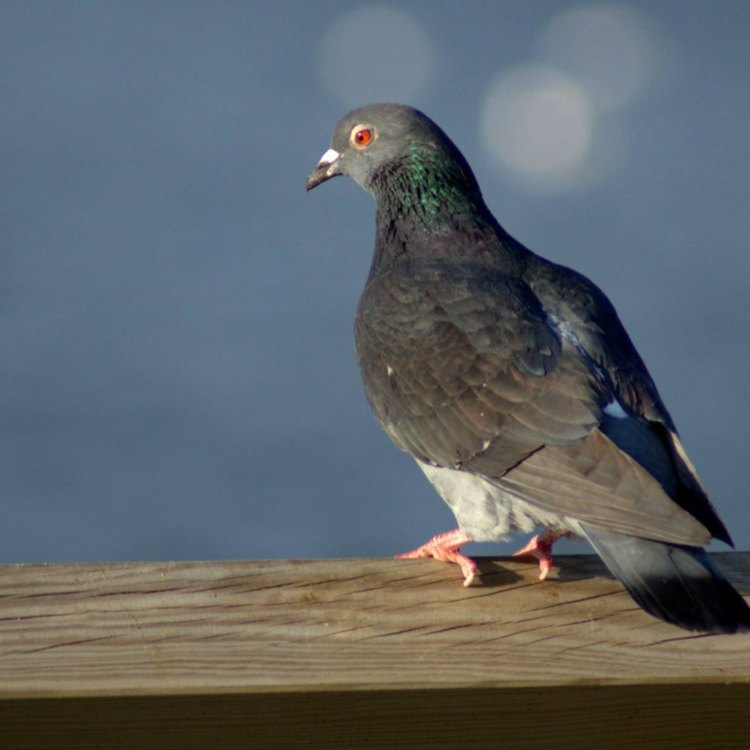
The Pigeon: A Fascinating Urban Bird
Disclaimer: The content provided is for informational purposes only. We cannot guarantee the accuracy of the information on this page 100%. All information provided here may change without prior notice.

